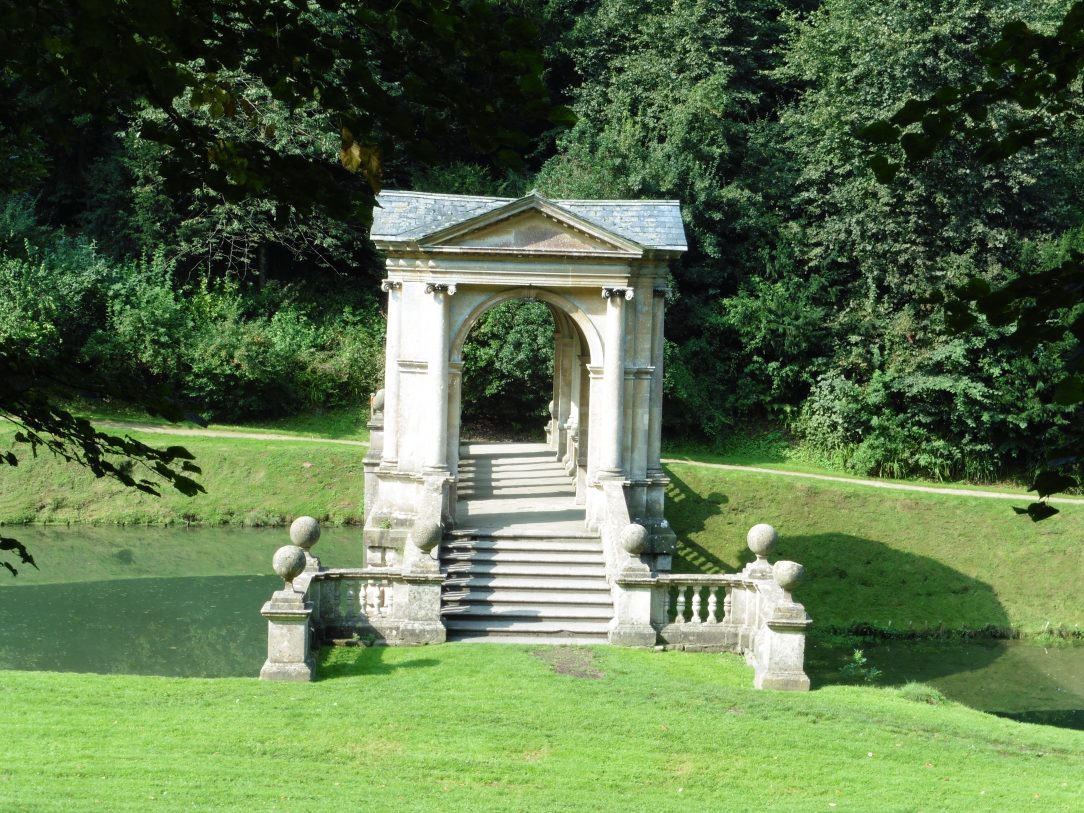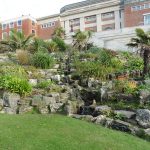Today we visited Prior Park Landscape Gardens, a National Trust property on the edge of Bath. Prior Park Landscape Gardens is part of Prior Park Estate built by Ralph Allen in 1742 as a showpiece for his business. Ralph Allen was an astute businessman who rose from modest beginnings as a post office clerk in 1710 to Postmaster and Mayor of Bath. He was to introduce reforms to the postal system which made him very rich and kept him employed right up until his 70’s. His reforms included sorting local mail for local delivery rather than being sent via London. Another was the sign for mail service which prevented mail men delivering mail and pocketing the money. Over a 40 year period his reforms saved the postal service around £1.5 million.
Prior Park Mansion

The money he made from the post office was to set himself up for his second business, quarrying stone. When he first arrived in Bath he started buying up land around Combe Down and soon owned most of it. From his quarries he was to become incredibly rich supplying the honey coloured stone which Bath is most famous for.
After purchasing his estate above Bath he built Prior Park Manor out of stone from his quarry. His Palladian mansion became an advertisement for his quarries and his architect John Wood who was to transform Bath into what we see today. John Wood was to draw inspiration from Ancient Greece in his architectural designs. The uneven rubble style stone block previously used in construction was replaced with evenly dressed square limestone blocks.
Beneath the hills at Combe Down Ralph Allens limestone quarry stretched for hundreds of acres. Ralph Allen introduced innovation into his quarrying operations so that the limestone blocks could be transported quicker and easier. He even had a wooden track laid down the road beside Prior Park estate for his wooden sledges loaded with limestone to pass down safely on their way to be transported by barge along the river Avon.
At his showpiece mansion he would host rich merchants who would look out across the estate at Bath far below and of course his fabulous gardens.
After his death the estate was passed down through the family before being purchased by Bishop Banes and converted into a Catholic College. These days it’s Prior Park College.

The National Trust took on the derelict gardens in 1993 and manage them as Prior Park Landscape Gardens. Since then they’ve been bringing them back to their original state.
The gardens are linked to the famous landscape designer Lancelot (Capability) Brown who’s name pops up on many of the 18th century gardens.
Grotto

Like most 18th century gardens designed by Lancelot (Capability) Brown the garden uses many optical illusions in their design. The first optical illusion we visited was The Grotto. Across Europe most gardens had them. Using limestone which would’ve been unusable in household construction due to its shape the grotto was built to look like an ancient cave. The Grotto at Prior Park is being refurbished currently but it has a video of a 3 dimensional view of the estate and gardens. It also shows the plans for the continued refurbishment of the gardens. When the gardens were originally designed a waterfall poured down the hill past the grotto into the serpentine lake. It’s quite interesting as it twists and turns as it curves around the hill. Set amongst trees it has a lovely stone bridge crossing it.
Stone Bridge

It is another one of Capability Browns illusions as you have the feeling that it continues on but in reality the bridge is the end of the lake.
The path led to the cabinet which in Ralph Allen’s time was a place where men retired to to discuss business.
The cabinet is a simple round clearing amongst the trees which is quite secluded from prying eyes.
Originally set below the cabinet was the Gothic Temple. One of Capability Browns ideas was to have view points which not only looked down over the landscape but could also be a highlight if viewed from elsewhere in the gardens.
Palladian Bridge

As we passed below Prior Park Mansion we had firstly a great view of the mansion itself , wow what a fabulous building. Secondly we had the view which Capability Brown designed for Ralph Allen. In the gully below three dams which cleverly look like one big dam are crossed by a Palladian Bridge.

The Palladian Bridge, one of only four in the world was built in 1775 and really is the highlight of the gardens. Built using Ralph Allen’s limestone the Palladian Bridge is not just a bridge but uses architecture to create part bridge part temple.

When Capability Brown designed his gardens, he made use of colour and the framing of views. The viewpoints all featured something which draws the eye such as an ancient looking temple, a statue or a bridge. Also from the various viewpoints around the Prior Park gardens we were able to look across the city of Bath with all of its lovely Palladian architecture. It was also one of the reasons why Ralph Allen chose Prior Park Estate.

When we talk about gardens we imagine flowers but in Georgian times gardens included forested areas, lakes and trees. It was a planned landscape made to look natural. Walking through the Prior Park gardens every now and then the trail would emerge from the trees with a view of a highlight.

We followed the trail down to the bottom dam where we stopped off for a coffee overlooking the Palladian bridge. Afterwards we took the walk back up the hill via the trail which wind back and forth up the steep hill through the heavily forested area.
Prior Park Landscape Gardens really are a lovely place to visit. It’s quite amazing that such tranquil surroundings are so close to the city. Tomorrow we are taking a break from the hustle and bustle of Bath as we head to the stone circles at Avebury.
Prior Park Landscape Gardens entry costs £6.50 (Free for National Trust Members) Opening Hours can be found here. There is not parking, they are accessible by either by public transport or the Hop-on Hop-off bus.







Absolutely beautiful.
It was Kim just stunning 🙂